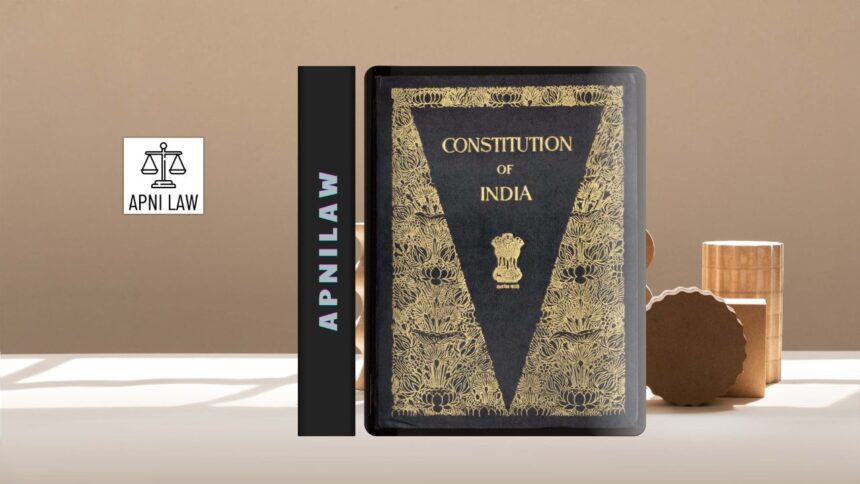The Indira Gandhi v. Raj Narain case (1975) is one of the most significant rulings in Indian constitutional law. The Supreme Court of India used this case to emphasize that judicial independence and judicial review form an integral part of the Constitution’s basic structure. The judgment came during a politically turbulent period and highlighted the judiciary’s role in safeguarding democracy and constitutional supremacy.
What Happened in the Indira Gandhi v. Raj Narain Case?
The case originated from the 1971 Lok Sabha elections. Indira Gandhi, the then Prime Minister, contested from Rae Bareli in Uttar Pradesh. Her main rival, Raj Narain, was a socialist leader who accused her of using unfair practices to secure victory. He filed an election petition in the Allahabad High Court under the Representation of the People Act, 1951.
The High Court, led by Justice Jagmohanlal Sinha, found Indira Gandhi guilty of electoral malpractices. The court invalidated her election and disqualified her from holding any elected office for six years. This decision was a political earthquake since it directly affected the sitting Prime Minister of India.
Indira Gandhi immediately appealed to the Supreme Court. However, during the appeals process, her government enacted the 39th Constitutional Amendment Act, 1975. This amendment introduced Article 329A, which removed judicial scrutiny in disputes concerning the election of the President, Vice President, Prime Minister, and Speaker of the Lok Sabha. In short, the amendment attempted to make the Prime Minister’s election immune from judicial review.
This amendment raised a constitutional question. Could Parliament, through an amendment, take away the judiciary’s power to review election disputes involving high offices? The Supreme Court had to decide whether Article 329A violated the basic structure of the Constitution.
Why Did the Supreme Court Rely on the Doctrine of Basic Structure?
The Court relied heavily on the doctrine of basic structure, which had been laid down two years earlier in the Kesavananda Bharati v. State of Kerala (1973) case. In that ruling, the Court declared that while Parliament had wide amending powers under Article 368, it could not destroy or damage the “basic structure” of the Constitution.
The doctrine protected certain fundamental features such as constitutional supremacy, separation of powers, rule of law, judicial review, and independence of the judiciary. In the Indira Gandhi case, the Court examined whether the 39th Amendment attempted to alter these essential principles.
The Supreme Court concluded that clauses (4) and (5) of Article 329A violated the basic structure. By placing the Prime Minister’s election beyond judicial scrutiny, Parliament had undermined judicial review and judicial independence. Therefore, the Court struck down those provisions.
How Did the Court Define Judicial Independence?
The judges issued separate but concurring opinions, each emphasizing different aspects of the basic structure. Yet they all agreed on one point: judicial independence is central to the Constitution.
Justice H.R. Khanna stressed that democracy, free and fair elections, and equality before law are part of the basic structure. He declared that depriving courts of power to decide election disputes was inconsistent with these principles.
Justice K.K. Thomas emphasized that judicial review forms the heart of the Constitution. Without it, the rule of law would collapse, and constitutional supremacy would give way to parliamentary supremacy.
Justice M.H. Beg and Justice Y.V. Chandrachud underlined that judicial independence ensures that constitutional values remain protected from political interference. They reasoned that if the Prime Minister’s election escaped judicial review, the very foundation of democratic accountability would collapse.
Thus, the judgment firmly tied judicial independence and judicial review to the basic structure doctrine.
What Role Did Separation of Powers Play?
The case also highlighted the principle of separation of powers. The Constitution distributes authority among the legislature, executive, and judiciary. By enacting Article 329A, Parliament attempted to eliminate the judiciary’s role in adjudicating disputes concerning the Prime Minister’s election.
The Court declared such a move unconstitutional. It explained that allowing Parliament to become the sole judge of its members’ elections, including that of the Prime Minister, would create a conflict of interest. A free and independent judiciary must decide election disputes, not a body influenced by political power.
This reasoning reinforced the separation of powers as another aspect of the basic structure. It also ensured that no single organ of government could override constitutional checks and balances.
Why Did the Case Have Wider Political Significance?
The Indira Gandhi v. Raj Narain case did not exist in isolation. It occurred during the Emergency period (1975–77). After the Allahabad High Court verdict, Indira Gandhi declared a state of Emergency under Article 352, citing internal disturbances. During the Emergency, civil liberties were suspended, press freedom was curtailed, and political opponents were jailed.
The attempt to shield the Prime Minister’s election from judicial review through the 39th Amendment was part of a larger strategy to consolidate power. However, the Supreme Court’s decision in this case checked this overreach.
By invalidating Article 329A clauses (4) and (5), the Court sent a clear message: even during extraordinary times, constitutional principles remain supreme. No amendment, however powerful, can override the basic structure.
How Did the Judgment Shape Indian Democracy?
The ruling had long-lasting consequences. First, it reaffirmed that free and fair elections form the cornerstone of Indian democracy. If elections could not be questioned in a court of law, the democratic system would lose credibility.
Second, it clarified that the independence of the judiciary is not negotiable. Parliament can pass laws and amendments, but it cannot cripple judicial authority. This interpretation preserved the balance of power between the legislature and judiciary.
Third, the judgment strengthened the doctrine of basic structure. It confirmed that judicial review itself is part of that doctrine. Without judicial review, there would be no mechanism to check unconstitutional laws or amendments.
Finally, the ruling showed that the Supreme Court acts as a guardian of constitutional supremacy. Even when faced with political pressure, the Court upheld its duty to protect democracy.
Why Does Judicial Independence Matter Today?
The Indira Gandhi v. Raj Narain case continues to hold relevance in modern India. The principle that judicial review cannot be taken away has shaped later judgments on constitutional amendments. The judiciary has repeatedly invoked the basic structure doctrine to strike down amendments that undermine democratic values.
Judicial independence remains critical for protecting citizens’ rights. If the judiciary were subject to political influence, constitutional safeguards would become meaningless. This case reminded India that democracy depends not only on elections but also on institutions that ensure fairness, accountability, and rule of law.
For any specific query call at +91 – 8569843472
Conclusion
The Indira Gandhi v. Raj Narain case (1975) stands as a turning point in Indian constitutional history. The Supreme Court struck down part of the 39th Amendment and declared that judicial independence and judicial review form part of the Constitution’s basic structure.
The judgment reaffirmed that Parliament’s powers to amend the Constitution are wide but not unlimited. It reinforced the separation of powers and preserved the democratic framework by ensuring that even the Prime Minister’s election remains subject to judicial scrutiny.
By upholding judicial independence, the Court protected India’s constitutional order during one of its darkest political phases. The decision continues to guide constitutional interpretation and remains a cornerstone of India’s democratic identity.







